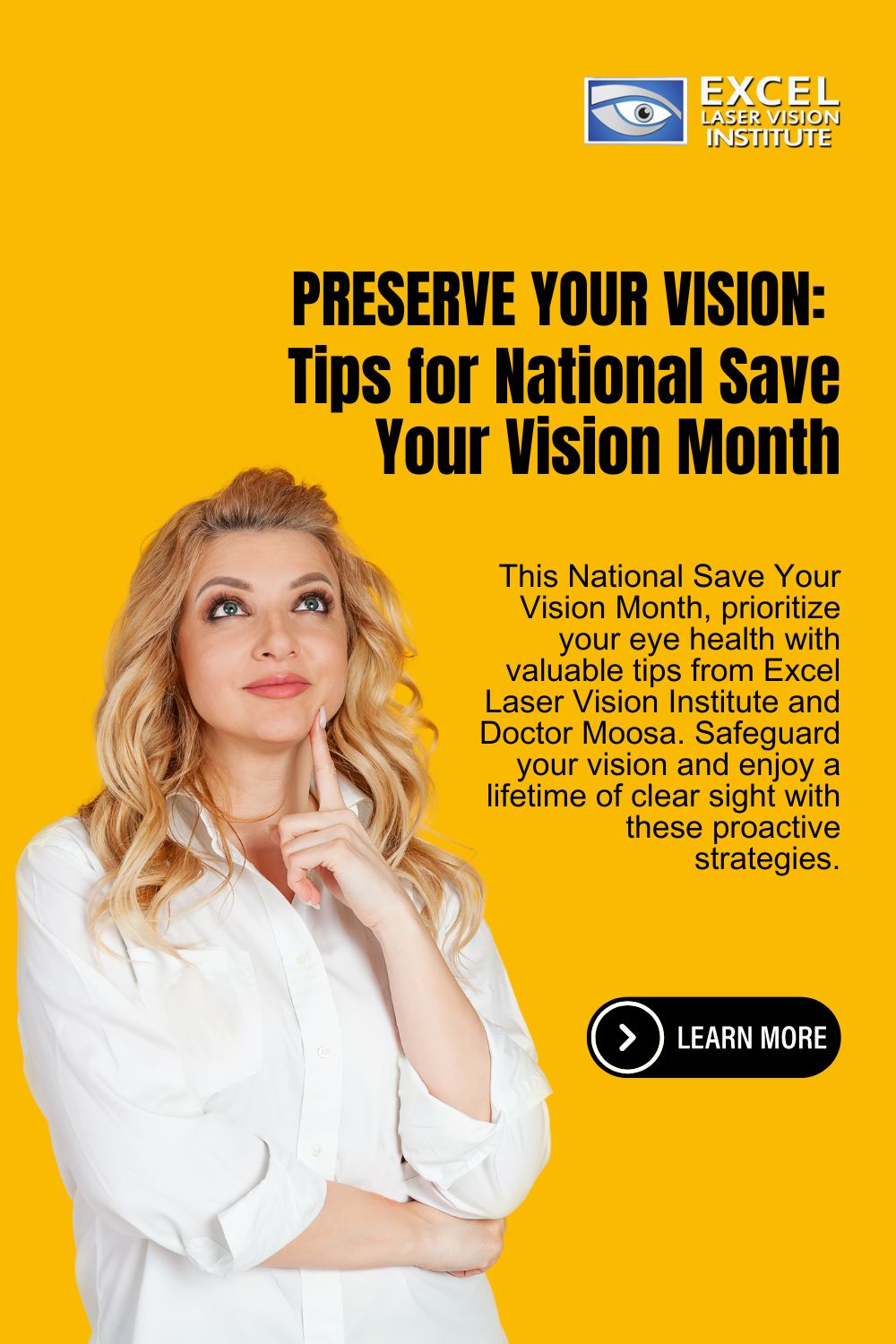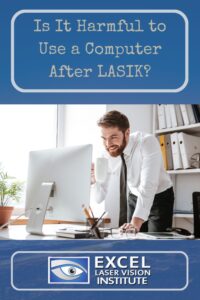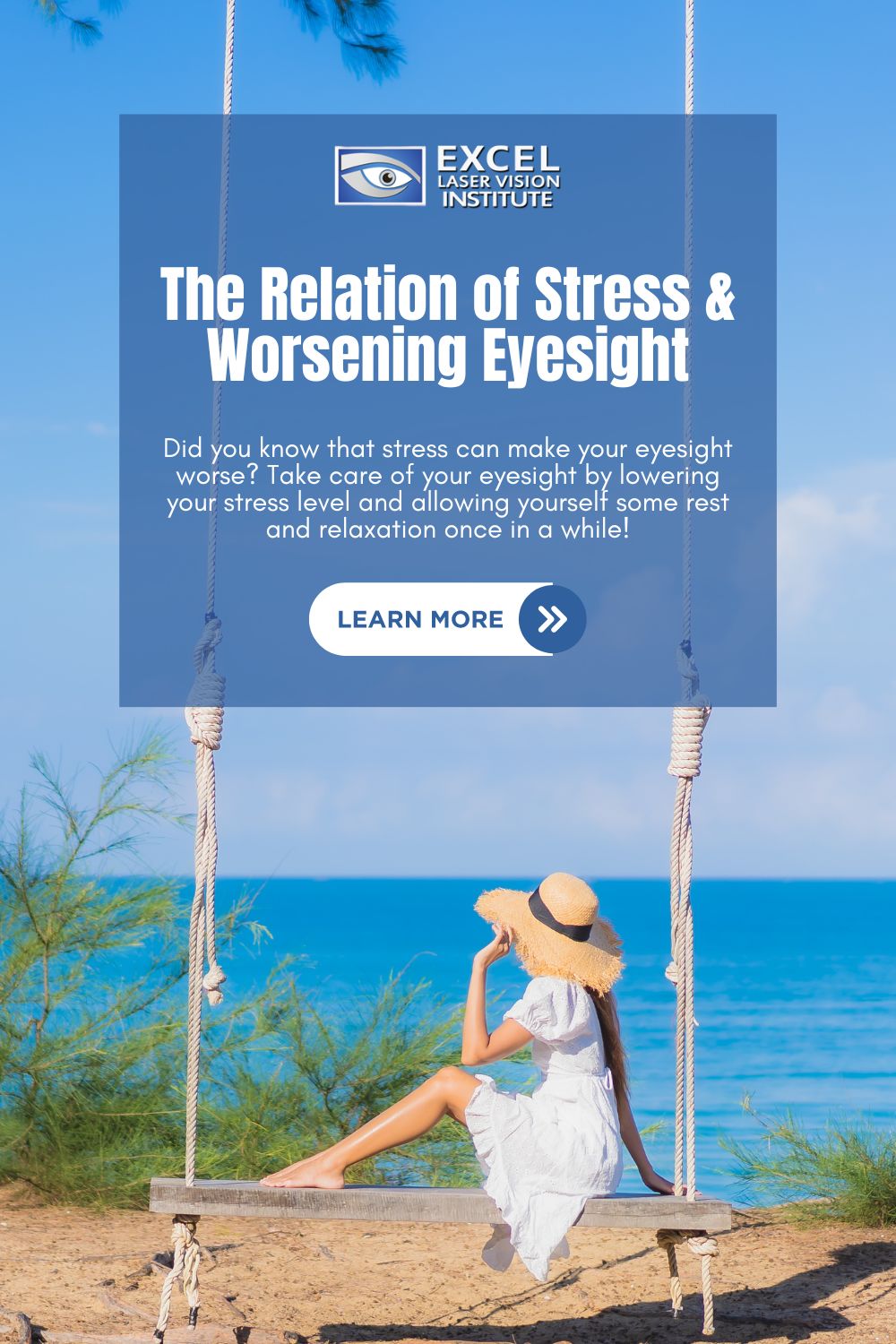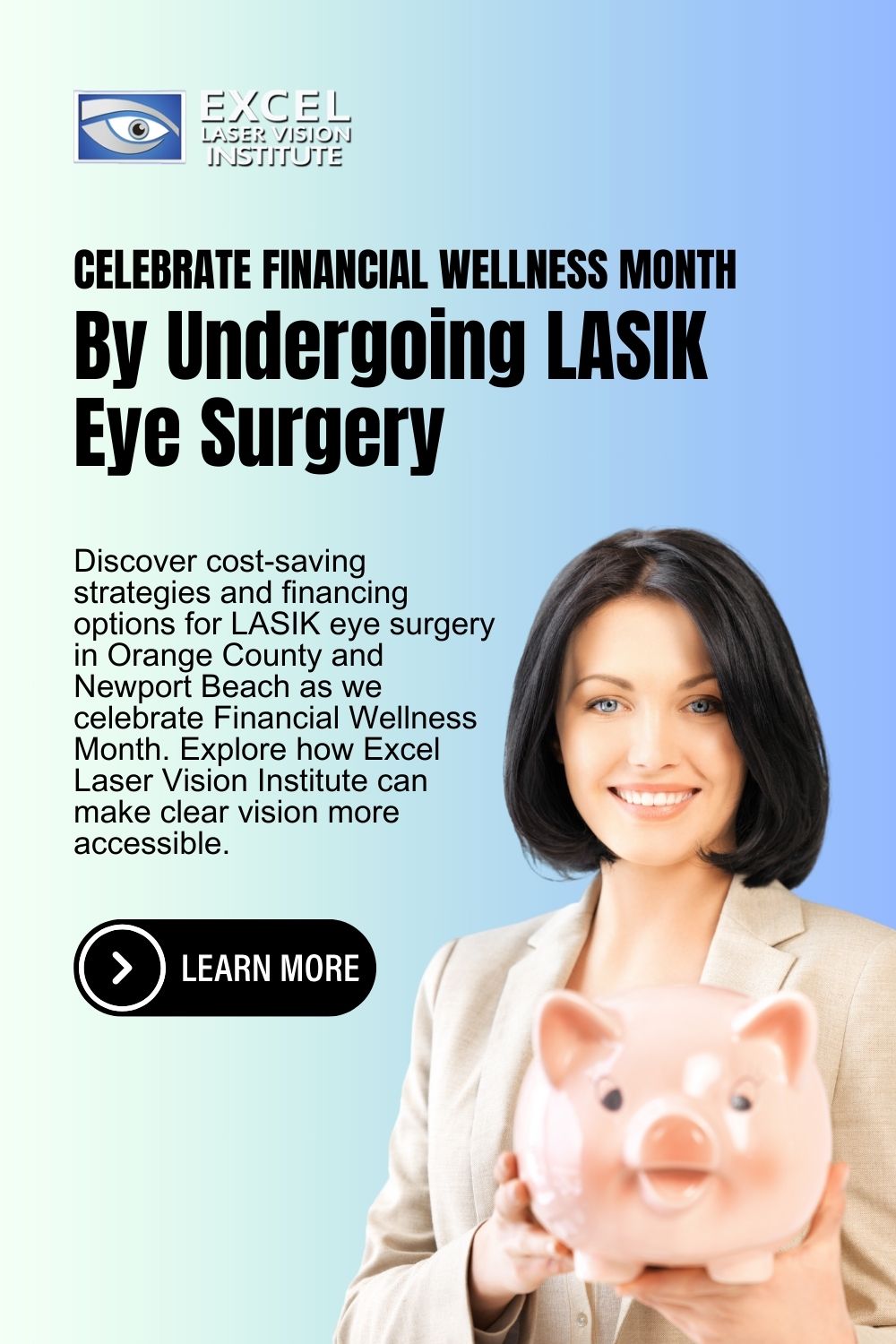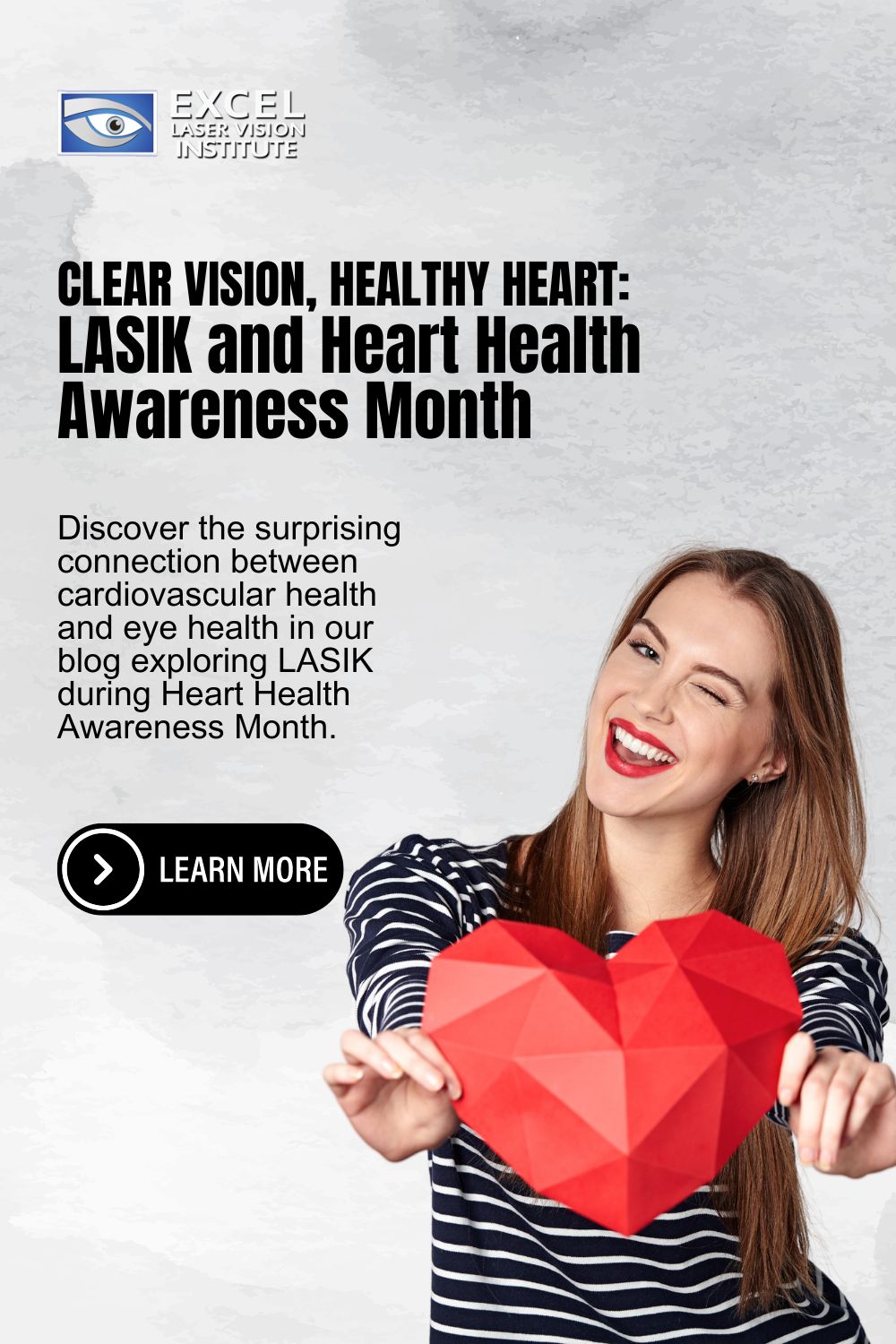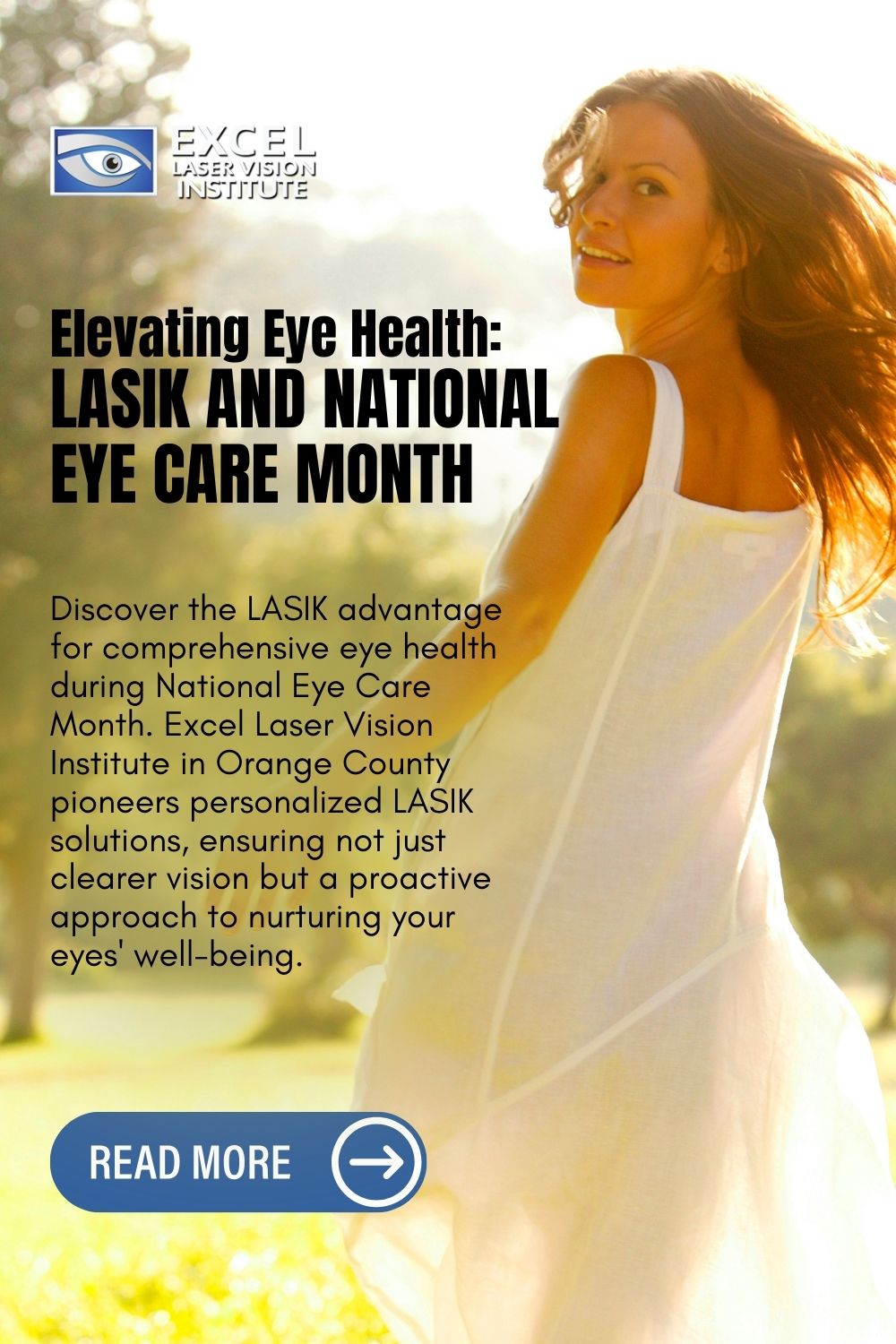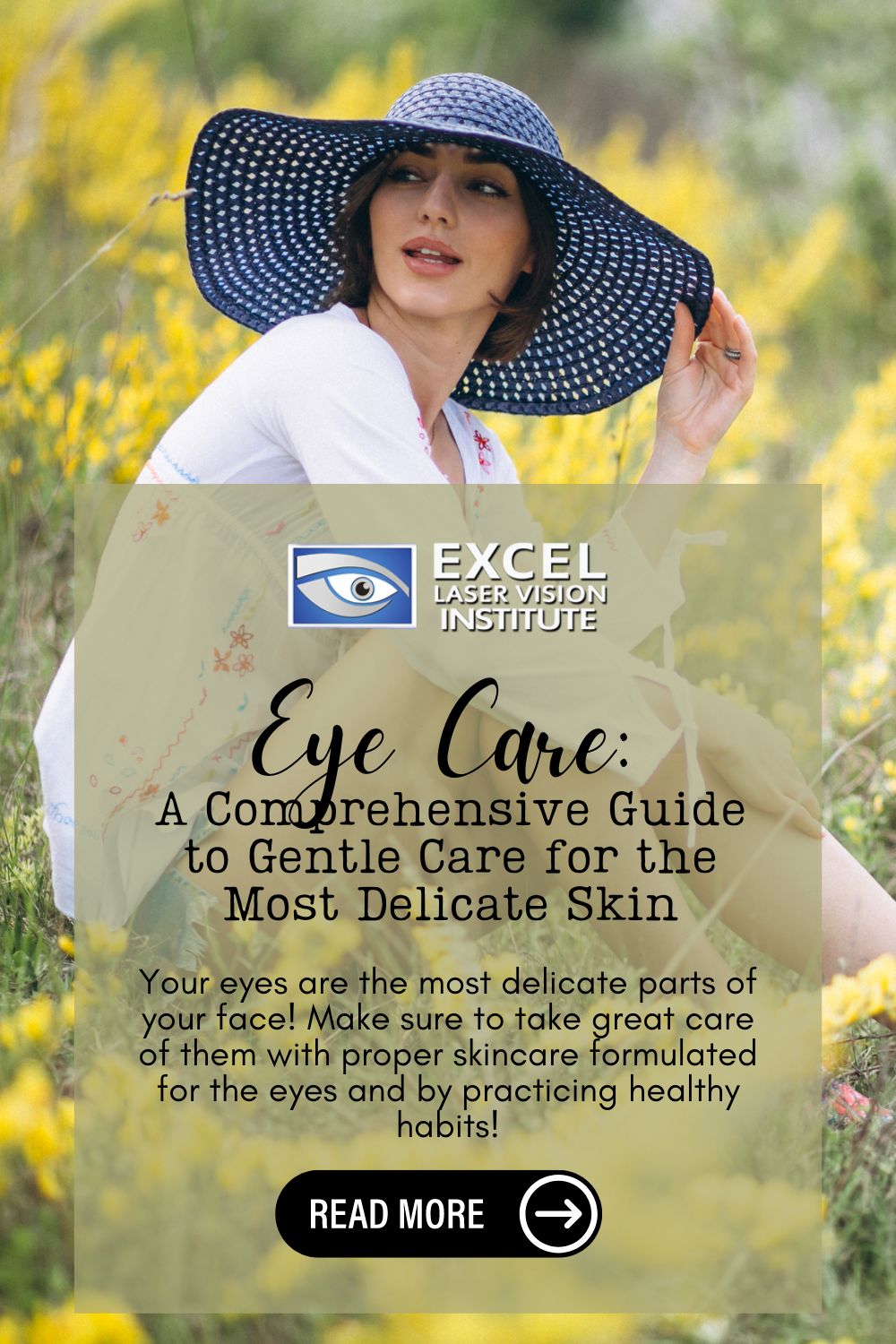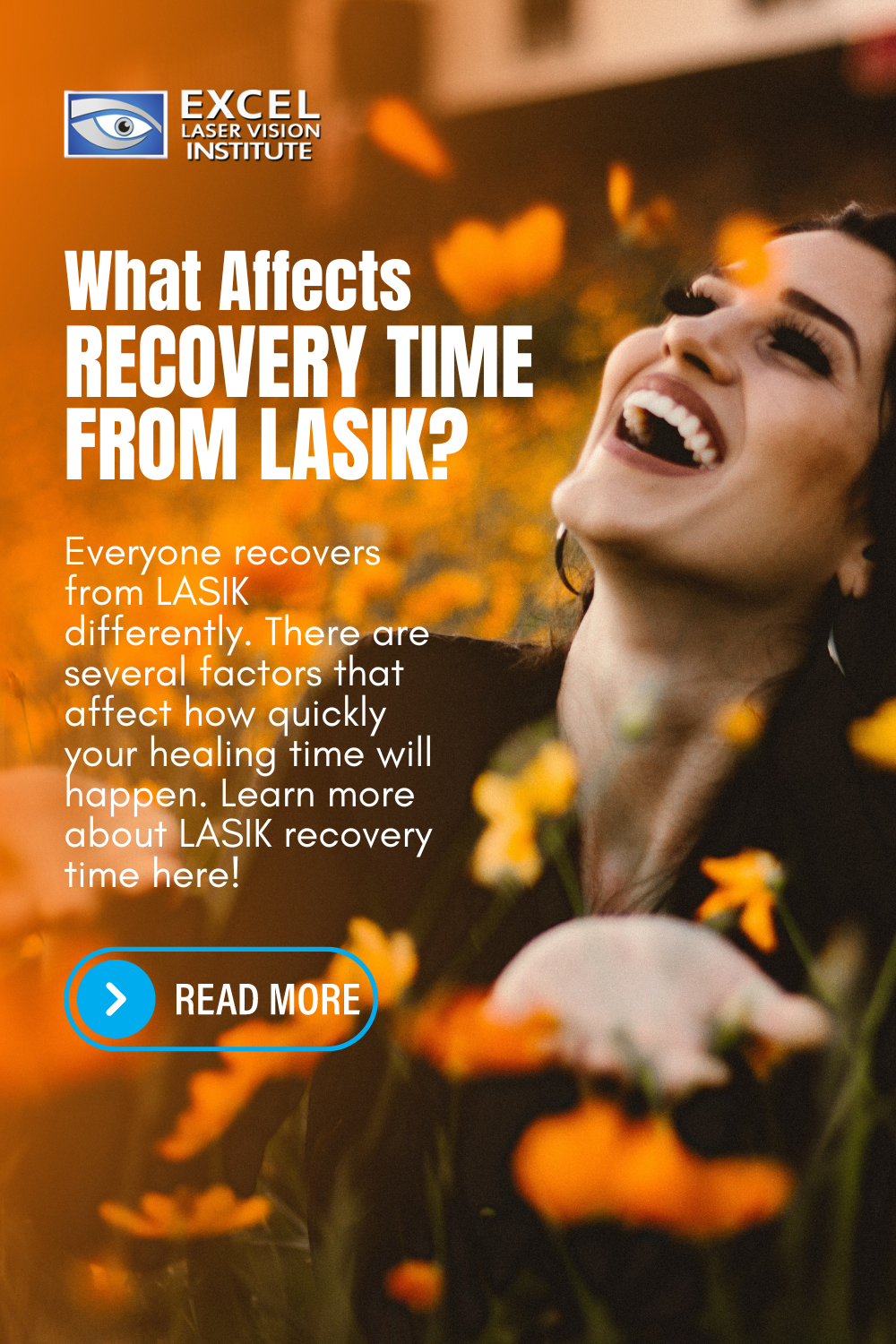
Preserve Your Vision: Tips for National Save Your Vision Month
March is National Save Your Vision Month, a time dedicated to raising awareness about the importance of eye health and preventing vision problems. Your eyes are precious, and taking care of them should be a priority.
As we observe National Save Your Vision Month, it’s essential to prioritize your eye health and take proactive steps to preserve your vision. At Excel Laser Vision Institute, led by renowned surgeon Doctor Moosa, we emphasize the importance of regular eye care and offer these tips to help you maintain optimal eye health:
- Schedule Regular Eye Exams: Regular eye exams are crucial for detecting vision problems early and preventing serious eye conditions. Your eye care professional can detect signs of eye diseases such as glaucoma and macular degeneration, which often have no early symptoms. They can also assess your overall eye health and determine if you need corrective lenses.
- Protect Your Eyes from UV Rays: UV radiation from the sun can damage your eyes and increase the risk of cataracts and other eye problems. Wear sunglasses that block 100% of UVA and UVB rays whenever you are outdoors, even on cloudy days. Also, consider wearing a wide-brimmed hat for added protection.
- Practice Good Screen Habits: If you spend long hours in front of a computer or digital device, follow the 20-20-20 rule. Every 20 minutes, look at something 20 feet away for at least 20 seconds to reduce eye strain. Position your computer screen at eye level and ensure proper lighting to reduce glare.
- Maintain a Healthy Diet: A diet rich in fruits and vegetables, especially those high in vitamins C and E, zinc, and omega-3 fatty acids, can help maintain good eye health. Consider adding foods like carrots, spinach, salmon, and citrus fruits to your diet. These foods contain antioxidants that can help protect your eyes from damage.
- Stay Hydrated: Drinking plenty of water is essential for overall health, including eye health. Dehydration can lead to dry eyes, so be sure to drink an adequate amount of water throughout the day to keep your eyes hydrated and comfortable.
- Quit Smoking: Smoking is linked to an increased risk of developing age-related macular degeneration, cataracts, and other eye conditions. Quitting smoking can improve your eye health and reduce your risk of vision problems.
- Practice Eye Safety: When engaging in activities that could pose a risk to your eyes, such as sports or DIY projects, wear protective eyewear to prevent eye injuries. Protective eyewear can shield your eyes from flying debris, chemicals, and other hazards.
- Take Breaks from Screens: Prolonged screen time can lead to digital eye strain, characterized by symptoms such as dry eyes, blurred vision, and headaches. Take regular breaks to rest your eyes and prevent discomfort. Follow the 20-20-20 rule and adjust your screen settings to reduce glare and blue light exposure.
- Manage Chronic Conditions: Conditions like diabetes and hypertension can affect your eye health. Manage these conditions with the help of your healthcare provider to reduce the risk of vision problems. Follow your doctor’s recommendations for monitoring and controlling these conditions.
- Be Mindful of Your Eye Health: Pay attention to any changes in your vision or eye health and seek prompt medical attention if you experience any concerns. Regular check-ups with your eye care professional can help detect and address potential issues early.
Conclusion
During National Save Your Vision Month and throughout the year, prioritize your eye health with regular exams and healthy habits. At Excel Laser Vision Institute, Doctor Moosa and our team are dedicated to helping you preserve your vision for a lifetime of clear sight. Schedule an appointment today and take the first step towards better eye health.
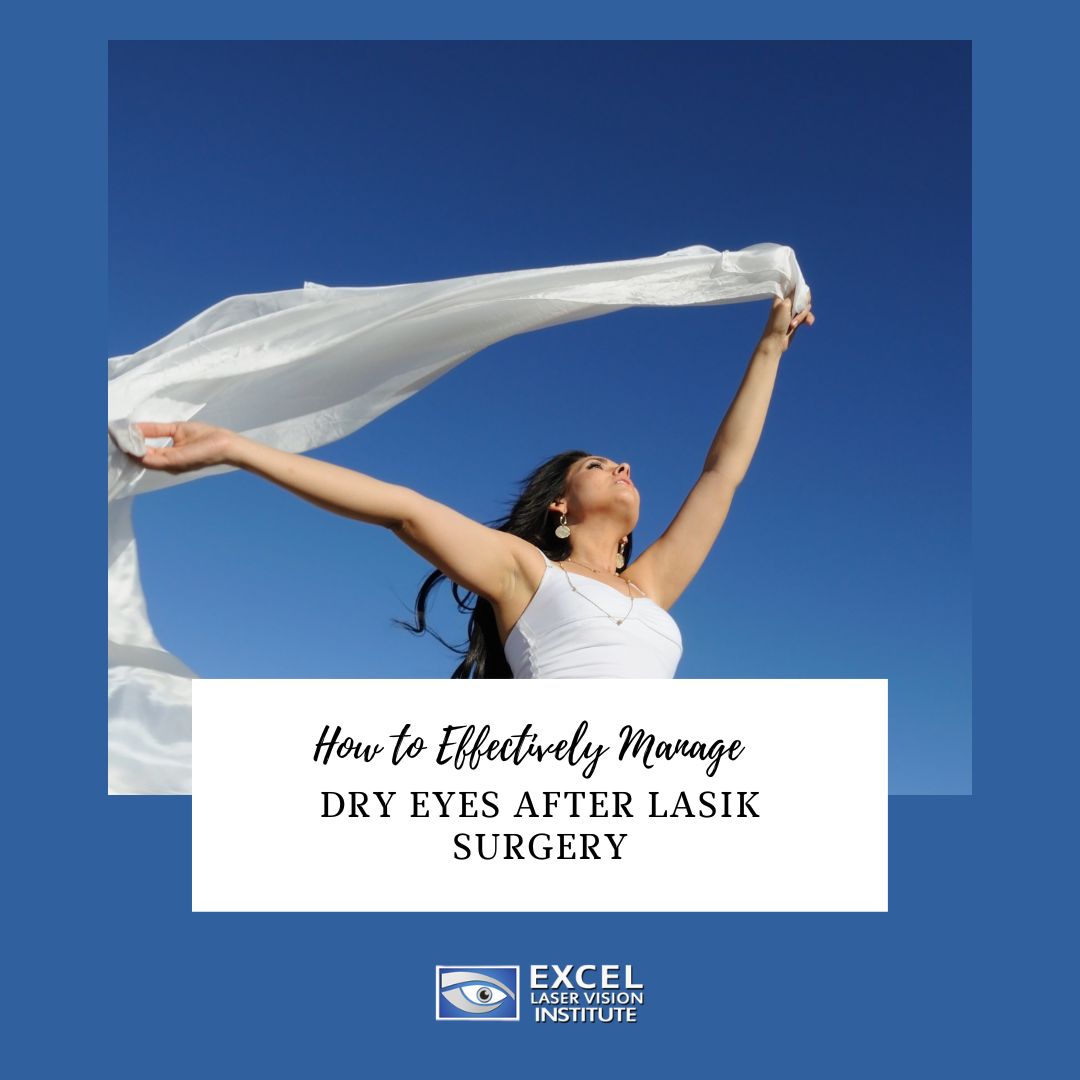
How to Effectively Manage Dry Eyes After LASIK Eye Surgery
It’s reasonable to be concerned about the side effects of LASIK eye surgery, such as dry eyes. Not every patient has symptoms following surgery. However, we have some good news for you: these symptoms are typically light and transient in those who do. One of the major advantages of Orange County LASIK is that it provides rapid recovery. Most patients return to their routines in less than a day, and many won’t need to take a day off from work or school.
Dry eye is one of the most typical side effects of LASIK. Having dry eyes can cause watery eyes, tired eyes, red eyes, vision distortion, a scratchy feeling, Stinging or burning, and difficulty driving at night. According to WebMD, 95% of patients experience dry eye immediately following a vision correction operation. But in the weeks following your Orange County laser eye surgery, you should see a noticeable improvement. The fewer dry eye symptoms you might anticipate, the further you are from your LASIK treatment.
Eye drops
You will be provided with lubricating eye drops by your Orange County LASIK surgeon to promote eye healing and manage side effects, including dry eyes. When and how to administer the drops must be done according to the directions. The symptoms of dry eye can be lessened by keeping your eyes moisturized with drops. After your procedure at our LASIK center near Fullerton, Ca, you can use over-the-counter eye drops, also known as artificial tears, as long as you need to. Once your operation is over, our staff will give you all the post-op care information you’ll need.
Limit your time in front of the screen
Following LASIK, you’ll be given an activity schedule outlining when you can resume regular activities. Within 24 hours, you’ll be able to perform most of your daily tasks, including using electronic devices. Even though you’ll be able to use screens without any problems, it’s advised to limit your usage while your eyes recover, at least for a few days after LASIK. Doing this will lower your risk of developing dry eyes and lessen any associated symptoms.
Be sure to take regular breaks from digital gadgets, and use lubricating eye drops if they worsen your dry eye symptoms.
Scleral contact lenses
LASIK is known to be a quick and painless surgery. After undergoing LASIK surgery, can your eyes start to burn? You can get the necessary alleviation through scleral contact lenses. These contacts are more substantial than regular contacts. Since they cover more of your eye, scleral contact lenses can retain a barrier of tears between the lens and your cornea. A porous substance was used to make these lenses. Scleral contact lenses will keep your body’s tears in constant contact with your eye while also giving comfort. The dryness, burning, and irritation you’re feeling ought to go away as a result.
Collagen punctal plugs
Punctal occlusion prevents drainage, prolonging the duration that tears remain on the surface of your eyes. Punctal collagen plugs are a non-permanent alternative, and these plugs will block the tear drainage ducts for roughly four days. After ten days, they will completely dissolve. After surgery, collagen punctal plugs are the best option. Your symptoms will probably feel the worst at this time.
10 Must-Have Items in Your Purse for Dry Eyes
For individuals with dry eyes, having the right items in their purses can make a significant difference in managing their condition and finding relief throughout the day. Dry eyes can be caused by varying factors such as environmental conditions, allergies, aging, or underlying health conditions. Carrying essential items in your purse can help alleviate discomfort and keep your eyes hydrated and comfortable. Here are some things to consider including in your purse if you constantly have dry eyes:
Preservative-Free Eye Drops
Preservative-free artificial tears are essential to relieve dryness, irritation, and discomfort immediately. Opt for single-dose vials or small bottles of preservative-free eye drops to keep in your purse. These drops can be used throughout the day to lubricate and hydrate your eyes without risking irritation from preservatives.
Eye Mist Spray
Eye mist sprays provide a quick and convenient way to hydrate dry eyes on the go. These sprays contain a fine mist of water or a soothing solution that can be sprayed directly onto closed eyelids to provide instant relief. Look for portable eye mist sprays that are compact and quick to carry in your purse.
Eyelid Cleansing Wipes
Keeping your eyelids clean is essential for preventing inflammation and irritation associated with dry eyes. Pack a few individually wrapped eyelid cleansing wipes in your purse to gently remove debris, allergens, and irritants from your eyelids throughout the day. Look for wipes specifically formulated for sensitive eyes and free of harsh chemicals or fragrances.
Warm Compress
A warm compress can help alleviate dry eye symptoms by promoting tear production and relieving eyelid inflammation. Consider carrying a portable heat pack or a small microwaveable compress in your purse. Heat the compress according to the instructions and apply it to your closed eyelids for several minutes to soothe dryness and discomfort.
Sunglasses
Protecting your eyes from harsh sunlight and wind can help prevent worsening dry eye symptoms. Keep a pair of sunglasses with UV protection in your purse to shield your eyes from harmful UV rays and reduce the evaporation of tears caused by exposure to wind and dry air.
Humidifier Stick
A portable humidifier stick can help add moisture to the air around you, which can be beneficial for relieving dry eye symptoms, especially in dry or air-conditioned environments. These small devices can be inserted into a water bottle and emit a fine mist of water vapor into the air. Carry a humidifier stick in your purse to use at work, in the car, or wherever you need additional humidity.
Omega-3 Supplements
Omega-3 fatty acids are known to support eye health and may help minimize inflammation and improve tear production in individuals with dry eyes. Consider carrying a small container of omega-3 supplements in your purse to take with meals or as directed by your healthcare provider.
Eye Protection Gear
Consider carrying protective eyewear in your purse if you engage in outdoor activities or spend time in environments with potential eye irritants, such as dust or pollen. Wraparound sunglasses or safety glasses can help shield your eyes from debris and reduce the risk of irritation and dryness.
Water Bottle
Staying hydrated is crucial for maintaining overall eye health and lubrication. Carry around a reusable water bottle in your purse and drink water regularly throughout the day to stay hydrated and promote tear production.
Eye Care Information
Lastly, consider keeping a card or note in your purse with important information about your eye condition, including any medications or treatments you use and contact information for your eye doctor. This can be helpful in emergencies or when seeking assistance from healthcare providers.
Excel Eye is committed to your well-being.
With these essential items in your purse, you can effectively manage dry eye symptoms and find relief wherever you go. However, you must consult your eye doctor or healthcare provider for personalized recommendations and treatment options tailored to your needs and condition.
Our Orange County LASIK center staff is dedicated to providing the best care possible for you. We have acquired the best knowledge and technology on the market on eye health so that you can enjoy a better life immediately. Our top-rated physician can assist you with any questions regarding the process, from aftercare to financing for the cost of laser eye surgery.

Is It Harmful to Use a Computer After LASIK?
Congratulations on your Los Angeles LASIK surgery! Now that you’re on your way out, your ophthalmologist has already been given the aftercare instructions. A common question that most new patients may be wondering is if it’s okay to get back to normal screen-related activities, including watching television, checking your email, or scrolling through your social media feed during your short recovery period. Whether you use technology primarily for work or recreation, learn what you need to know:
How long do I need to wait to use screens again after Los Angeles laser eye surgery?
You will refrain from watching television, using a computer or smartphone, playing video games, or using any other device with a screen for 24 hours after your LASIK surgery has been completed. Over the following few days, you can gradually increase your screen time after this initial period of rest. Generally speaking, a few days after LASIK, you’ll be able to use your computer without any restrictions. It’s crucial to realize that these are merely general recommendations. The recovery rate for each person’s eyes varies, and our eye surgeons will provide a specific time frame based on how quickly your eyes heal.
We understand how difficult it can be to avoid necessary technology, even for one day. We recommend letting family, friends, and co-workers know that you will be unable to respond to any texts or emails following your Los Angeles LASIK procedure. Additionally, ask someone you trust to hold onto your devices or use sticky notes to remind you not to use them. It’s second nature to all of us in the 21st century, so better to be safe than sorry. So go ahead and read a book, chat with a neighbor, or enjoy some gardening on your eyes’ “day off.”
Using technology in the weeks after LASIK
Your eyes will still be healing for a few weeks after LASIK. As a result, they might be more likely to experience moisture loss and dry eyes. Since we tend to blink less when gazing at a computer screen, using one may worsen this problem. In the initial weeks following LASIK, using the artificial tears your Los Angeles LASIK surgeon provided you, consciously blinking while using screens, and taking breaks are all important to maintaining eye health.
Throughout the LASIK recovery process, you should also get plenty of sleep. Your eyes get a chance to rest for several hours while you sleep. For a few weeks after LASIK, try to get to bed early and refrain from using your phone or computer in bed before you turn in. And as always, it’s wise to pay attention to your body. Turn off the computer to give your eyes more time to rest if you become irritated or uncomfortable while using it. It would be best if you didn’t exert too much effort in the initial weeks following LASIK. You’ll get better results if you give your eyes the required healing time.
8 Tips for Computer Display Settings for Good Eyesight
Adjusting your computer’s display settings is crucial for maintaining perfect vision and reducing eye strain, especially for those who spend considerable periods in front of screens. Here are some tips to optimize your display settings for better eye health:
Brightness and Contrast
Start by adjusting the brightness and contrast settings of your monitor. The display should be bright enough to see comfortably without causing glare or straining your eyes.
Avoid setting the brightness too high, as this can lead to eye fatigue and discomfort. Aim for a moderate brightness level that is comfortable for extended viewing sessions.
Color Temperature
Consider adjusting the color temperature of your monitor to reduce eye strain. Most displays offer options to adjust color temperature, with warmer tones (such as those resembling incandescent lighting) being easier on the eyes.
Experiment with varying color temperature settings to find the most comfortable for you. Generally, warmer tones are preferable for prolonged use, especially during evening hours when harsh blue light can interfere with sleep patterns.
Blue Light Filters
Blue light emitted by digital screens has been inextricably linked to eye strain and disrupted sleep patterns. Modern monitors and devices offer built-in blue light filters or software options that reduce blue light emission.
Enable blue light filters on your monitor, or consider using third-party software applications that adjust the color temperature of your screen to minimize blue light exposure, particularly during evening hours.
Text Size and Font
Adjust the text size and font settings to ensure optimal readability without straining your eyes. Increase the font size if you are squinting or leaning closer to the screen to read text.
Choose easy fonts on the eyes, such as Arial, Calibri, or Verdana, with clear and legible characters. Avoid using overly decorative or small fonts that may cause eye fatigue.
Refresh Rate
The refresh rate of your monitor can impact eye comfort, especially during fast-paced activities such as gaming or video playback. Higher refresh rates (e.g., 60Hz, 120Hz, or higher) can provide smoother motion and reduce eye strain.
If your monitor supports higher refresh rates, consider adjusting it to enhance visual comfort during prolonged screen time.
Display Resolution
Choose an appropriate display resolution that balances sharpness and readability. Higher resolutions offer clearer images but may require scaling to ensure text and graphics remain legible.
Experiment with different resolutions to find the optimal balance between clarity and comfort for your specific monitor and viewing distance.
Screen Calibration
Consider calibrating your monitor using specialized hardware or software tools to ensure accurate color representation and optimal image quality. Proper calibration can enhance visual comfort and reduce eye strain by ensuring consistent and accurate display output.
Ergonomic Considerations
In addition to adjusting display settings, ensure your workstation is ergonomically designed to promote comfortable viewing. Position your monitor at eye level and maintain a comfortable viewing distance to reduce neck and eye strain.
Adjust the height and angle of your monitor and your seating position to minimize glare and optimize viewing comfort.
Schedule your appointment today.
By implementing these tips and adjustments, you can optimize your computer’s display settings to maintain perfect vision and reduce eye strain during prolonged screen time. Prioritize your eye health by making small but impactful changes to your display settings, ultimately enhancing your overall well-being and productivity.
Excel Eye is dedicated to giving you the best care possible during your Los Angeles LASIK procedure. Our team is always here to assist you with details about the procedure and cost of your laser eye surgery!

12 Habits to Teach Your Kids to Protect Eyesight
Good eyesight is crucial for a child’s overall development and well-being. As technology becomes integral to daily life, you must instill healthy habits early on to protect your younger children’s eyesight. Here are some habits you can teach them:
Limit Screen Time
Encourage a balanced approach to screen time. The American Academy of Pediatrics recommends no more than 1-2 hours of screen time per day for children aged 2-5 and consistent limits for older children. Prolonged exposure to screens can lead to eye strain and discomfort.
Follow the 20-20-20 Rule
Teach your children the 20-20-20 rule to prevent eye strain. Every 20 minutes, take a 20-second break and look at something 20 feet away. This helps reduce eye fatigue caused by prolonged staring at screens or books.
Outdoor Playtime
Ensure your children spend time outdoors. Natural light is essential for eye development, and outdoor activities help prevent myopia (nearsightedness). Please encourage them to engage in sports and other outdoor games.
Proper Lighting
Create a well-lit environment for reading and other activities. Avoid dim or excessively bright lighting as it can strain the eyes. Position the light source behind your child’s shoulder while reading or doing homework.
Healthy Diet
A well-balanced diet rich in nutrients like vitamins A, C, and E and omega-3 fatty acids supports eye health. Include foods like carrots, leafy greens, berries, and fish in their meals to promote good eyesight.
Encourage Blinking
Remind your children to blink regularly, especially while using digital devices. Blinking helps moisten the eyes and reduce the risk of dry eye symptoms associated with prolonged screen time.
Proper Posture
Emphasize the importance of maintaining good posture while reading or using electronic devices. Ensure the screen is at eye level to prevent neck strain and discomfort.
Regular Eye Check-Ups
Schedule regular eye check-ups with an optometrist. Early detection of vision issues is crucial for timely intervention. Make it a routine to visit the eye doctor, even if there are no apparent problems.
Hand Hygiene
Encourage proper hand hygiene to prevent eye infections. Please remind your children not to touch their eyes with dirty hands and to wash their hands regularly, especially before touching their faces.
Establish a Bedtime Routine
Ensure your children get sufficient sleep. A consistent sleep routine helps in overall health, including eye health. Lack of sleep can contribute to eye strain and other vision-related issues.
Educate on Eye Safety
Teach your children the importance of wearing protective eyewear during activities like sports or crafting. Instill habits that promote safety to prevent eye injuries.
Model Healthy Habits
Children learn by example. Model good eye care habits yourself, and your children are more likely to adopt them. Show them the importance of taking breaks, maintaining a balanced lifestyle, and prioritizing eye health.
Conclusion
By incorporating these habits into your children’s daily routines, you can contribute to their eyesight’s long-term health and well-being. Building these habits early will set the foundation for a lifetime of good eye health. It is never too early to be mindful of the importance of good vision.
See related blog here: https://www.exceleye.com/2020/06/26/how-to-protect-your-eyes-this-summer/
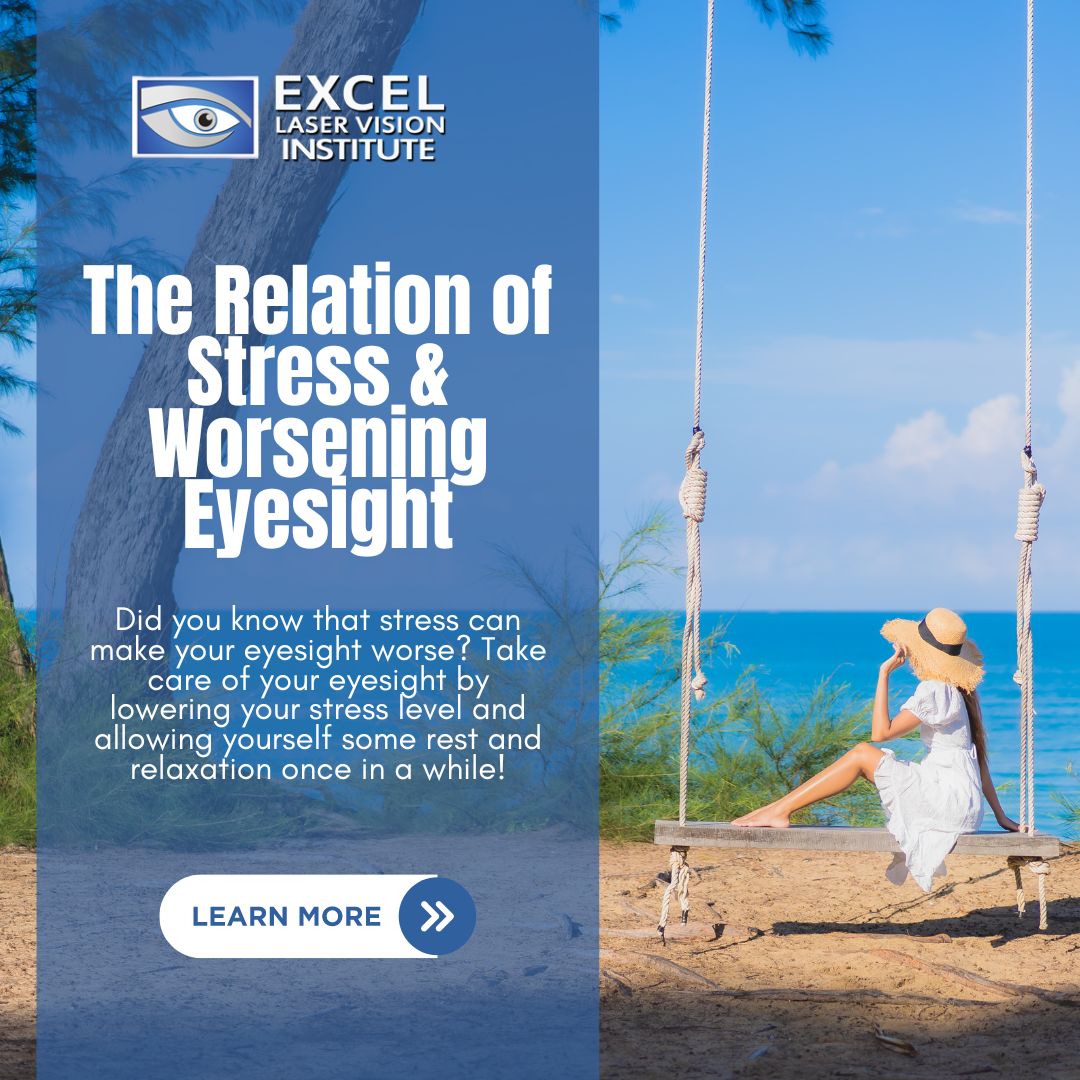
The Relation of Stress and Worsening Eyesight
Stress is a pervasive aspect of modern life that can impact various facets of health, including eyesight. The adverse effects of stress on eyesight are multifaceted, involving both short-term and long-term consequences. Here’s an exploration of how stress can adversely affect your eyesight:
Muscle Tension and Eye Strain
Stress often leads to increased tension in the muscles, including those around the eyes. Prolonged periods of stress can cause individuals to subconsciously clench their jaw, squint, or tighten facial muscles. This muscle tension contributes to eye strain, resulting in discomfort, headaches, and blurred vision.
Dry Eyes
Stress can mess around with the normal functioning of the tear ducts, leading to reduced tear production. Dry eyes can cause irritation, a gritty feeling, and sensitivity to light. Blinking, which helps distribute tears evenly, may decrease during stressful periods, exacerbating the symptoms of dry eyes.
Blood Flow and Vascular Changes
Chronic stress can affect blood circulation throughout the body, including the eyes. Reduced blood flow to the eyes may result in visual disturbances. Additionally, stress can cause changes in blood vessel dilation and constriction, impacting the overall health of the eyes and potentially contributing to conditions like glaucoma.
Increased Risk of Eye Conditions
Prolonged stress may elevate the risk of developing or exacerbating existing eye conditions. For example, stress increases the likelihood of developing conditions such as myopia (nearsightedness), astigmatism, and even retinal detachment. Chronic stress may also worsen the symptoms of existing eye conditions.
Impact on the Immune System
Stress has a suppressive effect on the immune system, making the body more vulnerable to infections. Eye infections, such as conjunctivitis (pink eye), can occur or worsen when the immune system is compromised due to stress. This can lead to redness, itching, and discharge from the eyes.
Tension, Headaches and Migraines
Stress-induced tension headaches and migraines can have secondary effects on eyesight. Intense headaches can cause light sensitivity, visual disturbances, and sometimes temporary vision impairment. Managing stress can be crucial in preventing the onset or recurrence of these headaches.
Impact on Lifestyle Choices
Stress can influence lifestyle choices that, in turn, affect eyesight. Individuals under stress may engage in behaviors such as poor dietary habits, inadequate sleep, and increased use of digital devices. These factors can contribute to conditions like digital eye strain, nutritional deficiencies, and disrupted sleep patterns, all negatively impacting vision.
Psychosomatic Symptoms
Stress can manifest as psychosomatic symptoms, where emotional or psychological stressors manifest physically. Vision changes or disturbances may be one such manifestation. These symptoms may not have a clear physiological basis but can still impact an individual’s eyesight perception.
Coping Mechanisms
Some individuals cope with stress by doing some activities directly impacting their eyesight. For example, excessive rubbing of the eyes or prolonged periods of staring at screens without breaks can lead to strain and discomfort.
Chronic Conditions
Long-term exposure to chronic stress may contribute to the development or progression of chronic eye conditions, such as age-related macular degeneration (AMD) or diabetic retinopathy. Stress-related physiological changes can potentially exacerbate these conditions.
Stress Management Techniques for Eye Health
Managing stress effectively is key to maintaining good eyesight. Incorporating stress-relief techniques into your daily routine can help mitigate the negative impact of stress on your eyes. Consider the following strategies:
- Mindfulness Meditation: Practicing mindfulness meditation can reduce stress and improve overall well-being. Take a few minutes each day to focus on your breath and be present in the moment.
- Eye Exercises: Regular eye exercises can help reduce eye strain and improve focus. Try simple exercises like blinking, focusing on distant objects, and palming (covering your eyes with your palms) to relax your eye muscles.
- Limit Screen Time: Prolonged screen time can strain your eyes. Take regular breaks to rest your eyes and reduce the risk of digital eye strain.
- Proper Lighting: Ensure your workspace is well-lit to reduce eye strain. Use task lighting and avoid glare from windows and overhead lights.
- Healthy Lifestyle: Eating a balanced diet, getting regular exercise, and maintaining a healthy sleep schedule can all contribute to reducing stress and improving eye health.
- Relaxation Techniques: Engage in activities that help you relax, such as reading, listening to music, or practicing yoga. These activities can reduce stress levels and promote overall well-being.
- Breathing Exercises: Deep breathing exercises can help relax your body and mind, reducing stress levels. Practice deep breathing techniques regularly to promote relaxation and improve blood flow to the eyes.
- Aromatherapy: Aromatherapy using essential oils like lavender or chamomile can have a calming effect, reducing stress and promoting relaxation. Use a diffuser or inhale the scent directly to experience the benefits.
- Yoga for the Eyes: Yoga poses that focus on eye movements and relaxation, such as palming or eye rotations, can help relieve eye strain and promote better vision.
- Progressive Muscle Relaxation: This technique involves tensing and then relaxing different muscle groups in the body, promoting overall relaxation and reducing stress levels.
- Journaling: Writing down your thoughts and feelings in a journal can help you process stress and gain perspective. Regular journaling can reduce stress and improve mental clarity.
- Listening to Music: Listening to calming music can help reduce stress and promote relaxation. Choose music with a slow tempo and no lyrics for the most relaxing effect.
- Spending Time in Nature: Spending time outdoors in nature can help reduce stress and improve overall well-being. Take a walk in a park or garden to relax and rejuvenate your mind and body.
- Laughter Therapy: Laughter has been shown to reduce stress hormones and promote a sense of well-being. Watch a funny movie or spend time with friends who make you laugh to reduce stress and improve your mood.
- Guided Imagery: Guided imagery involves imagining a peaceful scene or scenario to promote relaxation and reduce stress. Use guided imagery recordings or create your own peaceful imagery to relax and unwind.
By incorporating these stress-relief techniques into your daily routine, you can help protect your eyesight and maintain healthy vision for years to come.
Conclusion
In conclusion, stress has a complex and interconnected relationship with eyesight. While short-term stress may lead to temporary discomfort and visual disturbances, chronic stress can contribute to developing or worsening various eye conditions. Managing stress is not only essential for your mental and physical well-being but also for your eye health. Chronic stress can have a detrimental effect on your vision, leading to eye strain, dry eyes, and an increased risk of developing or worsening eye conditions. By incorporating stress management techniques into your daily routine, such as meditation, exercise, and relaxation techniques, you can reduce stress levels and protect your eyesight. Additionally, regular eye exams and consultations with healthcare professionals are crucial for early detection and management of stress-related eye issues. Remember, taking care of your stress is taking care of your eyes.
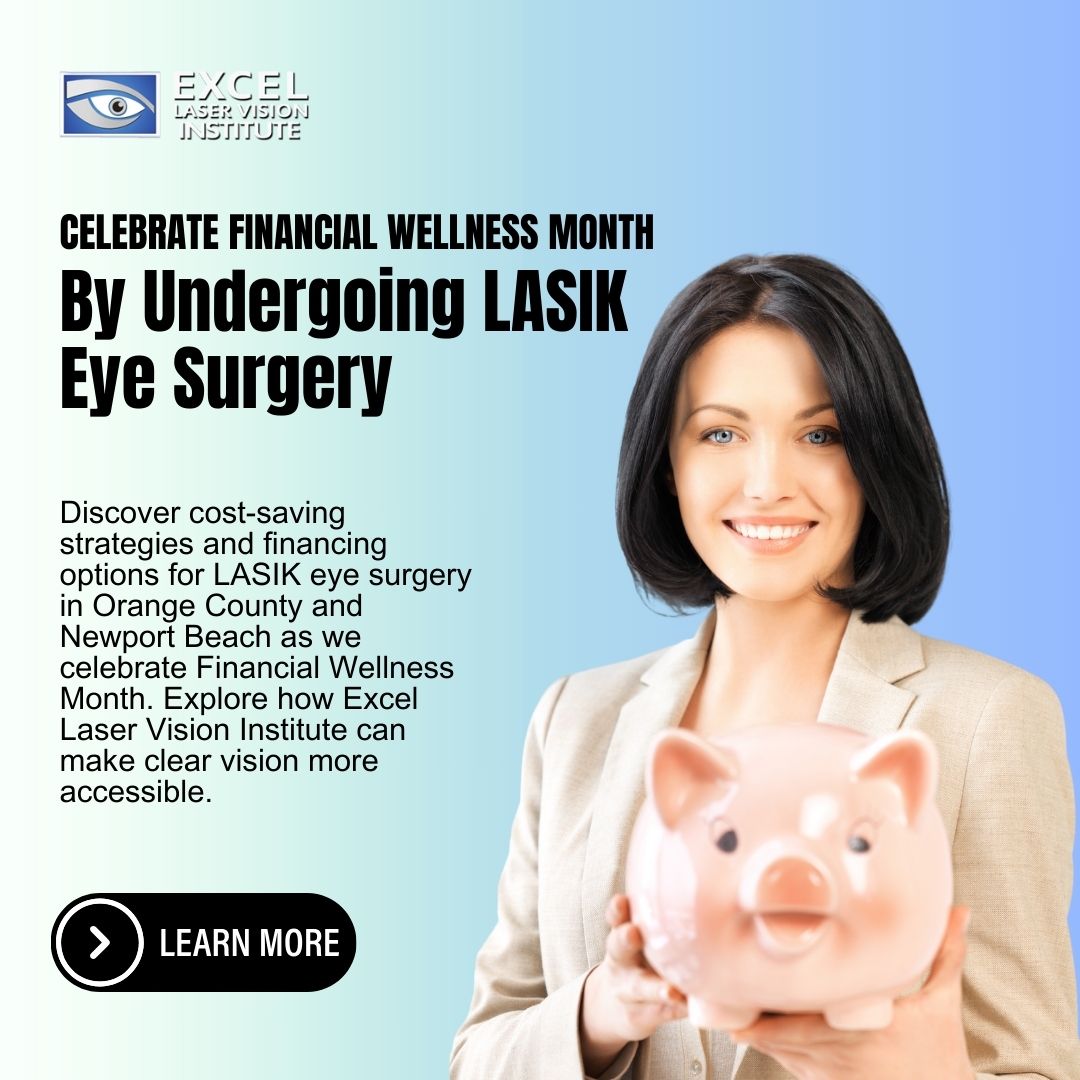
Celebrate Financial Wellness Month By Undergoing LASIK Eye Surgery
In February, as we focus on Financial Wellness Month, it’s an opportune time to explore how investing in LASIK eye surgery can align with your financial goals. LASIK isn’t just about vision correction; it’s also a strategic financial decision that offers long-term benefits. Let’s delve into the financial aspects of LASIK surgery, particularly in Orange County and Newport Beach, and discover how Excel Laser Vision Institute can help make this investment in your vision health more accessible.
Understanding LASIK Costs
LASIK eye surgery cost in Orange County can vary depending on several factors, including the technology used, the experience of the surgeon, and the complexity of the procedure. On average, LASIK costs range from a few thousand to several thousand dollars per eye. While the upfront LASIK cost may seem daunting, it’s essential to consider the long-term savings and benefits of LASIK compared to the ongoing expenses of glasses and contact lenses.
Cost-Saving Tips for LASIK
- Research and Compare: Take the time to research different LASIK providers in Orange County and Newport Beach. Compare prices, read reviews, and inquire about any available discounts or promotions.
- Look for Financing Options: Many LASIK centers, including Excel Laser Vision Institute, offer financing plans to help make LASIK more affordable. These plans allow you to pay for LASIK in manageable monthly installments, spreading the cost over time.
- Inquire About Insurance Coverage: While most insurance plans don’t cover LASIK surgery, some flexible spending accounts (FSAs) or health savings accounts (HSAs) may allow you to use pre-tax dollars to pay for LASIK. Check with your insurance provider to explore your options.
- Take Advantage of Promotions: Keep an eye out for special promotions or discounts offered by LASIK providers, especially during Financial Wellness Month. Excel Laser Vision Institute, for example, is currently offering 00 off SMILE laser eye surgery when surgery is completed by March 31, 2024.
- Consider the Long-Term Savings: Although LASIK requires an upfront investment, it can lead to significant long-term savings by eliminating the need for glasses, contact lenses, and related expenses over time. Calculate the potential savings over several years to understand the true cost-effectiveness of LASIK.
Affordable LASIK at Excel Laser Vision Institute
Excel Laser Vision Institute is committed to making LASIK more accessible to individuals in Orange County and Newport Beach. With state-of-the-art technology and experienced surgeons, Excel Laser Vision Institute offers high-quality LASIK procedures at competitive prices. Additionally, Excel Laser Vision Institute provides flexible financing options to accommodate different budgetary needs, ensuring that LASIK eye surgery cost in Orange County is not a barrier to achieving clear vision.
Invest in Your Eye Health
As you focus on financial wellness this February, consider investing in your vision health with LASIK surgery. By exploring cost-saving tips, financing options, and promotions like those offered by Excel Laser Vision Institute, you can make LASIK more affordable and attain the clear vision you deserve. Take the first step toward budget-friendly vision and financial well-being by scheduling a consultation with Excel Laser Vision Institute today.
In conclusion, LASIK surgery is not only an investment in clearer vision but also a strategic decision for financial wellness. With careful planning, research, and the assistance of providers like Excel Laser Vision Institute, you can navigate Orange County and Newport Beach LASIK costs effectively and achieve the vision you desire without breaking the bank.
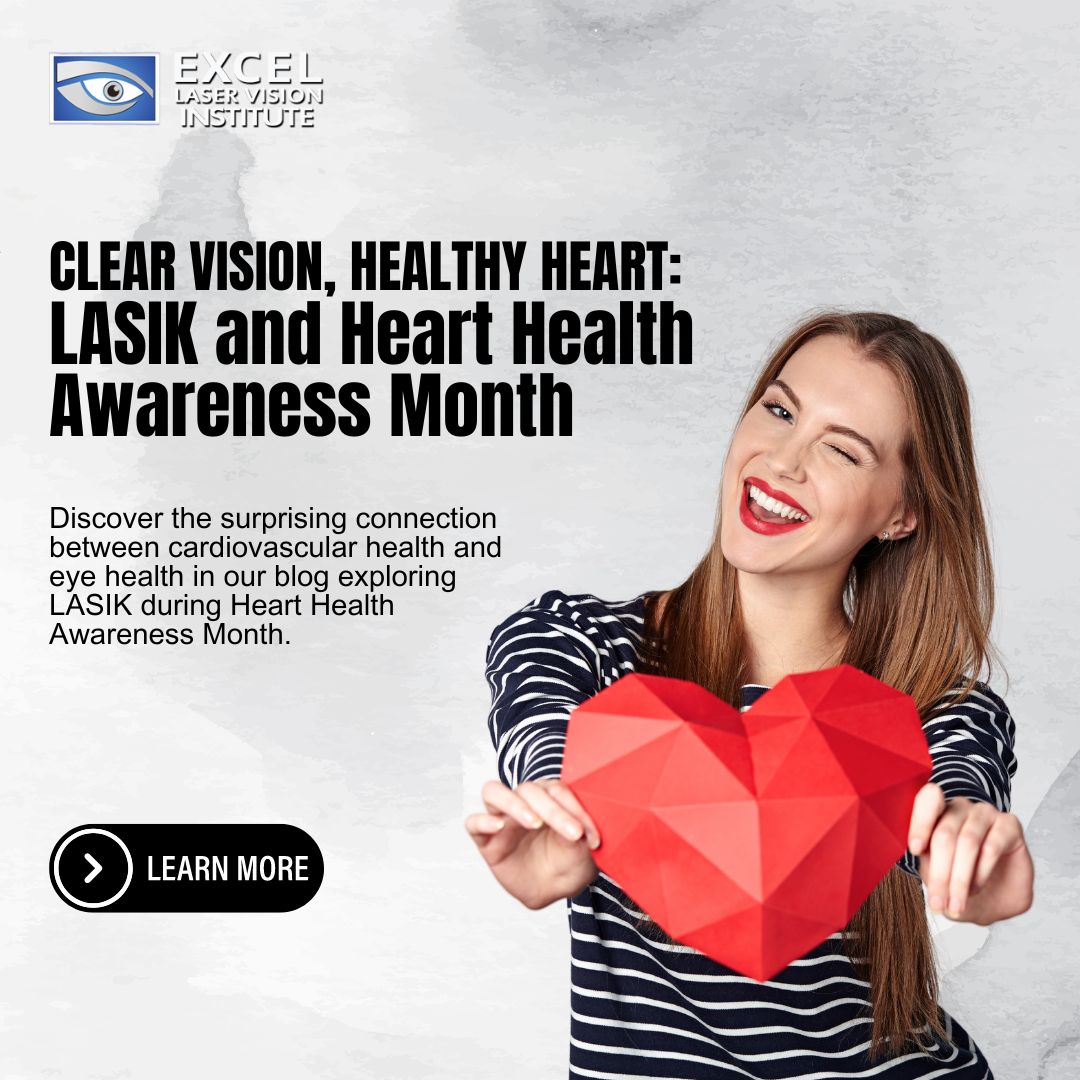
Clear Vision, Healthy Heart: LASIK and Heart Health Awareness Month
February marks Heart Health Awareness Month, a time dedicated to highlighting the importance of cardiovascular well-being. While we often associate heart health with exercise and a balanced diet, it’s crucial to recognize the connection between heart health and eye health. In this blog, we’ll delve into the intricate relationship between cardiovascular health and eye health, shedding light on how LASIK, available at Excel Laser Vision Institute serving Newport Beach and the rest of Orange County, contributes to overall well-being.
The Surprising Connection: Cardiovascular Health and Eye Health
The eyes and the heart may seem unrelated, but they share a vital connection through the intricate network of blood vessels. The eyes’ delicate and complex tissues require a robust blood supply to function optimally. Therefore, any issues affecting blood vessels, such as those related to cardiovascular health, can impact vision.
LASIK and Improved Blood Flow: A Positive Impact on Eye Health
LASIK, or laser-assisted in situ keratomileusis, is renowned for correcting refractive errors and providing clear vision without the need for glasses or contact lenses. While the primary goal is vision enhancement, the benefits extend beyond visual acuity. The improved blood flow associated with overall cardiovascular health positively impacts the eyes.
By promoting optimal blood circulation, LASIK contributes to maintaining the health of the eyes’ essential structures, including the cornea and retina. A well-regulated blood supply supports the efficient delivery of nutrients and oxygen, aiding in the eyes’ overall function and health.
Reducing Risks: LASIK as a Preventive Measure
Cardiovascular issues can pose risks to the eyes, leading to conditions such as diabetic retinopathy, glaucoma, or macular degeneration. LASIK, by enhancing blood flow and reducing the dependency on corrective lenses, can play a role in lowering the risk of these eye-related complications.
Embracing Overall Well-being with LASIK at Excel Laser Vision Institute
At Excel Laser Vision Institute, we understand the importance of comprehensive well-being. Our Newport Beach LASIK procedures are designed not only to correct vision but to contribute to the overall health of your eyes. With a team of experienced professionals and cutting-edge technology, we prioritize the connection between cardiovascular health and eye health.
Take the First Step: Celebrate Heart Health Awareness Month with LASIK
As we observe Heart Health Awareness Month, consider LASIK in Orange County, particularly Newport Beach, as more than a vision correction procedure. It’s a step toward embracing overall well-being. Schedule a consultation at Excel Laser Vision Institute in Newport Beach and Orange County to explore how LASIK can contribute to the health of your eyes and your heart. Say goodbye to glasses and embrace a clearer vision that aligns with a heart-healthy lifestyle.
This February, prioritize your heart health and your vision. LASIK at Excel Laser Vision Institute, serving Newport Beach and the rest of Orange County, is your partner in achieving both.
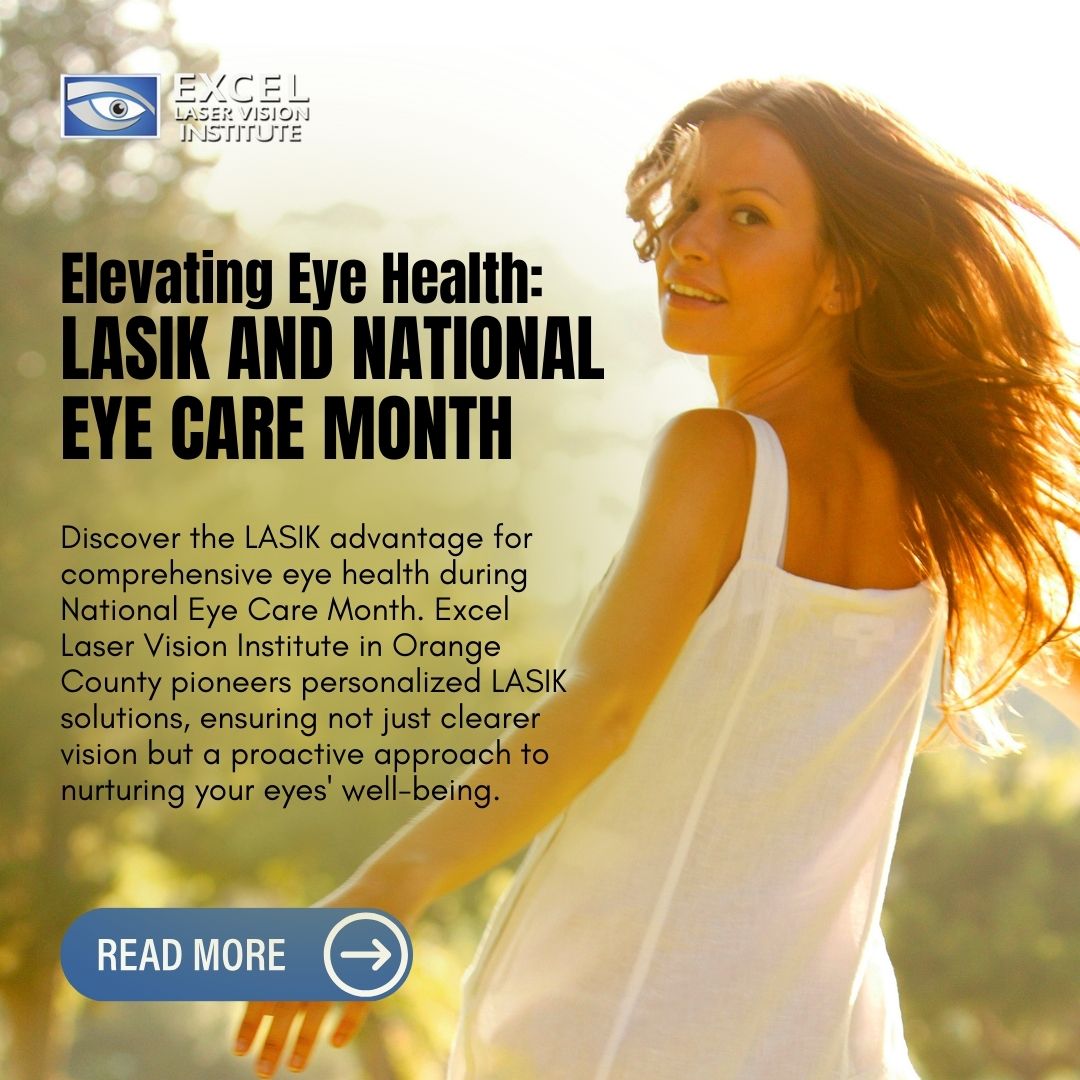
Elevating Eye Health: LASIK and National Eye Care Month
January marks National Eye Care Month, a dedicated time to emphasize the importance of maintaining optimal eye health. This month-long observance serves as a reminder to prioritize regular eye check-ups, adopt healthy eye care practices, and explore vision enhancement options such as LASIK. In this blog, we delve into the significance of eye care during National Eye Care Month and how LASIK, offered by Excel Laser Vision Institute in Orange County, contributes to comprehensive eye health.
Understanding National Eye Care Month: A Visionary Approach
National Eye Care Month is a collective effort to raise awareness about the significance of regular eye examinations and preventive eye care measures. It encourages individuals to be proactive in maintaining good eye health, ensuring early detection of potential issues and promoting overall well-being.
The Role of LASIK in Eye Care: Clear Vision, Healthy Eyes
LASIK (laser-assisted in situ keratomileusis) is a revolutionary refractive surgery that goes beyond the conventional means of vision correction. It’s not just about bid farewell to glasses or contact lenses; it’s a step towards comprehensive eye care. LASIK corrects common refractive errors like nearsightedness, farsightedness, and astigmatism, providing individuals with clearer, sharper vision.
Excel Laser Vision Institute: Pioneering LASIK in Orange County
Excel Laser Vision Institute, situated in Orange County, stands out as a leading institution committed to providing exceptional LASIK services. With a team of experienced professionals and state-of-the-art technology, Excel Laser Vision Institute is dedicated to enhancing vision outcomes while prioritizing the overall health of the eyes.
The LASIK Advantage during National Eye Care Month
Precision and Clarity: LASIK ensures improved vision precision, allowing individuals to appreciate the world with enhanced clarity.
Freedom from Visual Aids: Experience the freedom from glasses or contact lenses, contributing to a hassle-free and comfortable lifestyle.
Efficient Eye Care: LASIK simplifies routine eye care, eliminating the need for constant adjustments and prescription changes associated with traditional visual aids.
Preventive Vision Enhancement: LASIK serves as a preventive measure, addressing refractive errors before they potentially lead to more serious eye conditions.
Takeaway: Nurturing Eye Health with LASIK
As we observe National Eye Care Month, consider LASIK not just as a vision correction procedure but as an integral part of a comprehensive eye care approach. Excel Laser Vision Institute in Orange County is dedicated to providing personalized LASIK solutions, ensuring optimal eye health and visual well-being. Take a proactive step towards clearer vision and healthier eyes during this significant month dedicated to eye care.
Ensure your eyes receive the attention they deserve—celebrate National Eye Care Month with LASIK at Excel Laser Vision Institute.

Eye Care: A Comprehensive Guide to Gentle Care for the Most Delicate Skin
The skin around your eyes is exceptionally delicate and sensitive compared to the skin on the rest of your face and body. This delicate area is prone to various issues, such as fine lines, wrinkles, puffiness, dark circles, and irritation due to its thin texture and lack of oil glands. Understanding the unique characteristics of this skin and implementing a targeted skincare routine can help maintain its health and vitality. Here’s why the skin around your eyes is so delicate and how you can take care of it effectively:
Thin Skin
The skin around your eyes is the thinnest on your entire body, measuring only about 0.5 millimeters compared to the average thickness of 2 millimeters on the rest of your face. This thinness makes it more susceptible to environmental damage, such as UV radiation, pollution, and harsh skincare products.
Fewer Oil Glands
Unlike the rest of your face, the skin around your eyes has fewer oil glands, making it prone to dryness and dehydration. This lack of natural moisture can contribute to the development of fine lines, wrinkles, and premature aging.
Constant Movement
The skin around your eyes is in constant motion due to blinking, squinting, and facial expressions. This repetitive movement can lead to the breakdown of collagen and elastin fibers, forming crow’s feet and expression lines.
Underlying Blood Vessels
The skin around your eyes contains a dense network of blood vessels closer to the surface than other areas of your face. This can make the skin appear thinner and more translucent, leading to dark circles and puffiness, mainly when blood vessels dilate or become congested.
How Do You Take Care of It?
To effectively care for the very delicate skin around your eyes, consider the following tips:
Gentle Cleansing
Start your eye care routine with a gentle cleanser formulated for the eye area. Use a mild, fragrance-free cleanser to remove makeup, dirt, and impurities without irritating. Avoid harsh rubbing or pulling; gently pat the cleanser around your eyes with your fingertips.
Gentle Application
When applying skincare products or makeup around your eyes, lightly touch and avoid tugging or pulling on the skin. Use your ring finger, which applies the slightest pressure, to pat or dab the product into the skin gently.
Use an Eye Makeup Remover
Use a specialized eye makeup remover to remove stubborn eye makeup, especially waterproof mascara or eyeliner. Look for a gentle, oil-free formula to ensure that it effectively removes makeup without leaving behind a greasy residue.
Apply a Soothing Toner
After cleansing, apply a soothing and alcohol-free toner to the eye area. A toner helps balance the skin’s pH and prepares it to absorb subsequent skincare products. Choose a toner with hydrating ingredients like chamomile or rose water to calm the delicate skin around your eyes.
Hydrate with an Eye Cream
Selecting a nourishing eye cream is crucial for maintaining moisture and preventing the appearance of fine lines and wrinkles. Look for an eye cream formulated with hyaluronic acid, ceramides, and peptides to nourish, hydrate and support the skin’s natural collagen production. Use your ring finger to gingerly dab on the eye cream, gently tapping it around the orbital bone.
See related blog here: https://www.exceleye.com/2024/01/08/how-skincare-and-makeup-routines-promote-good-eye-health/
Address Specific Concerns
Choose an eye cream with targeted ingredients if you have specific concerns such as dark circles, puffiness, or crow’s feet. For dark circles, consider products with vitamin C or kojic acid. Caffeine and cucumber extracts are effective in reducing puffiness. Retinol or bakuchiol can be beneficial for addressing fine lines and wrinkles.
Protect with SPF
The skin around your eyes is susceptible to sun damage, so protecting it with SPF is crucial. Use a broad-spectrum sunscreen with at least SPF 30 every morning, even on cloudy days. Opt for a sunscreen specifically formulated for the eye area to prevent irritation. UV radiation from the sun can cause collagen degradation, hyperpigmentation, and premature aging, so protecting this delicate area from sun damage is essential.
Be Mindful of Ingredients
Avoid using skincare products with harsh or irritating ingredients around the eyes. Fragrances, alcohol, and certain acids can be too harsh for the delicate skin and may cause redness or dryness. Opt for products labeled as hypoallergenic and ophthalmologist-tested.
Get Enough Sleep
Adequate sleep is extremely vital for the health of your eyes and the surrounding skin. Lack of sleep can directly lead to dark circles and puffiness. Aim for 7-9 hours of high-quality sleep every single night to allow your skin to regenerate and repair.
See related blog here: https://www.exceleye.com/2024/01/02/how-sleep-affects-the-health-of-your-eyes/
Stay Hydrated
Proper hydration is essential for your skin’s overall health and appearance, including the eye area. Drink enough water throughout the day to keep your skin hydrated and plump.
See related blog here: https://www.exceleye.com/2024/01/03/proper-hydration-before-during-and-after-lasik/
Cooling Treatments
Consider using cooling eye masks, gel patches, or chilled cucumber slices to reduce puffiness and soothe tired eyes. These treatments help constrict blood vessels, reduce inflammation, and promote lymphatic drainage, leaving the skin around your eyes refreshed and rejuvenated.
Limit Rubbing
Avoid rubbing or pulling at the fragile skin around your eyes. Excessive rubbing can lead to irritation, redness, and even premature aging. Instead, use a gentle tapping motion when applying products.
Regular Eye Check-Ups
Regular eye check-ups with an optometrist can help monitor and address eye health concerns. Issues like dry eyes or irritation may be related to underlying eye conditions that need professional attention.
Protect Against Environmental Stressors
Environmental stressors, such as pollution and harsh weather, can impact the health of your skin. Wear sunglasses with UV protection to shield your eyes and the surrounding skin from harmful UV rays and environmental damage.
Avoid Smoking
Smoking can contribute to premature aging and wrinkles around the eyes. Quitting smoking not only gives you advantages for your overall health but also supports the health and appearance of your skin.
Practice a Healthy Lifestyle
Maintain a healthy lifestyle by indulging in a balanced diet rich in antioxidants, regular exercise, and stress management. These factors make contributions to the overall well-being of your skin, including the eye area.
Conclusion
In conclusion, properly caring for your eye area requires a gentle and targeted approach. By incorporating these guidelines into your skincare routine, you can lovingly nurture the delicate skin around your eyes, prevent premature aging, and address specific concerns effectively. Tailor your routine to your needs, and consider consulting with a dermatologist for personalized advice on maintaining optimal eye health and beauty.
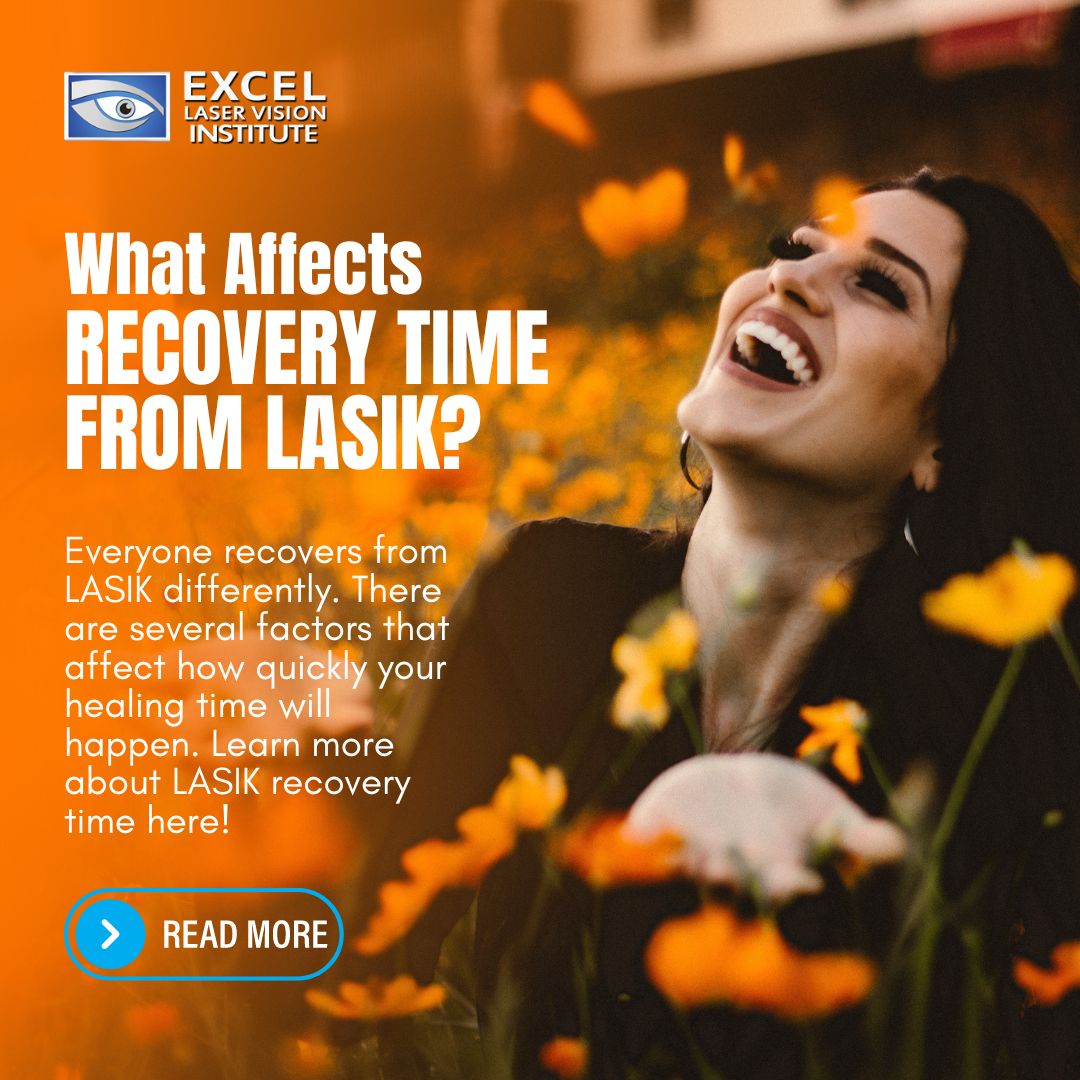
What Affects Recovery Time from LASIK?
LASIK (laser-assisted in situ keratomileusis) stands out as a highly sought-after refractive eye surgery in Los Angeles, effectively addressing vision issues like nearsightedness, farsightedness, and astigmatism. The success of LASIK largely hinges on the healing process, a transformative journey during which the cornea undergoes changes to achieve the desired visual outcome. In this context, it’s crucial for patients in Los Angeles, considering or recovering from LASIK, to comprehend the factors influencing healing time.
Individual Healing Response
Each individual’s body responds uniquely to surgery. Genetics, overall health, and the natural healing ability of the body play pivotal roles in determining how quickly the eyes recover from LASIK. Excel Laser Vision Institute understands these unique responses, ensuring personalized care for every patient.
Age
Age is a significant factor influencing the healing process after LASIK. Younger individuals in Los Angeles often exhibit a more robust healing response, contributing to a quicker recovery. However, the overall health of the eyes and corneal tissue remains a critical consideration for determining healing time at Excel Laser Vision Institute.
Pre-Existing Eye Conditions
Patients in Los Angeles with pre-existing eye conditions like dry eye syndrome or corneal diseases may experience an extended healing time after LASIK. These conditions can impact the stability of the tear film and overall corneal health, affecting the recovery process. Excel Laser Vision Institute addresses such conditions with specialized care.
Corneal Thickness
The thickness of the cornea plays a vital role in determining LASIK eligibility and can influence healing time. Thicker corneas, providing more tissue for reshaping during surgery, may contribute to a more stable healing process. Excel Laser Vision Institute assesses corneal thickness for optimal outcomes.
Compliance with Postoperative Care
Adhering to postoperative care instructions is paramount for a successful recovery. Patients in Los Angeles are advised by Excel Laser Vision Institute to use prescribed eye drops, avoid activities that may irritate the eyes, and attend follow-up appointments for a smooth healing process.
Occupation and Lifestyle
The nature of one’s occupation and lifestyle in Los Angeles can impact healing time. Those engaged in physically demanding or outdoor activities receive guidance from Excel Laser Vision Institute on extra precautions during the initial recovery period.
Technology and Surgical Technique
Advancements in LASIK technology and surgical techniques contribute to faster healing times. Excel Laser Vision Institute utilizes modern LASIK procedures, such as bladeless LASIK, resulting in less discomfort and quicker visual recovery than older techniques.
Postoperative Complications
Although rare, complications during or after LASIK can impact healing time. Excel Laser Vision Institute remains vigilant, addressing issues such as infection, inflammation, or corneal flap complications promptly to ensure optimal recovery.
Initial Refractive Error
The severity of the initial refractive error being corrected influences healing time. Patients with higher prescriptions may experience a more extended recovery period, and Excel Laser Vision Institute provides personalized guidance based on individual needs.
Patient Expectations
Unrealistic expectations or impatience may lead to dissatisfaction with perceived recovery speed. Patients in Los Angeles are educated by Excel Laser Vision Institute about the gradual improvement in visual acuity, with final results appearing over several weeks to months.
Conclusion
While LASIK is renowned for its quick visual recovery, individual factors and circumstances can impact healing. Patients in Los Angeles considering LASIK are urged to undergo a thorough evaluation at Excel Laser Vision Institute. Experienced eye surgeons assess suitability for the procedure, offering personalized guidance on expected healing times. Adhering to postoperative care instructions and maintaining open communication with the surgeon is crucial for a successful and timely recovery from LASIK at Excel Laser Vision Institute.
See related blog here: https://www.exceleye.com/2019/03/29/top-mistakes-that-slow-down-recovery-time-after-a-corrective-eye-surgery-in-orange-county/


